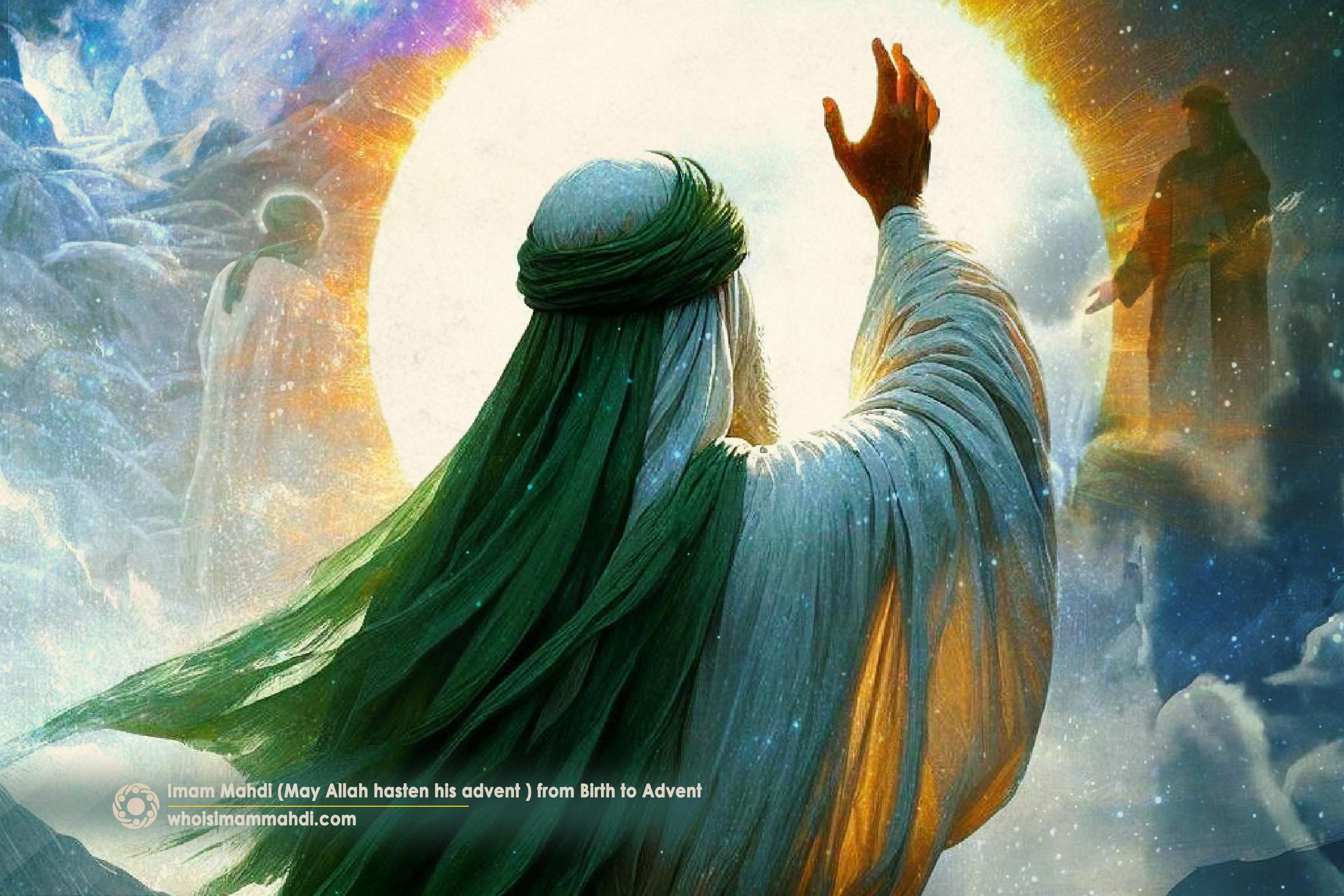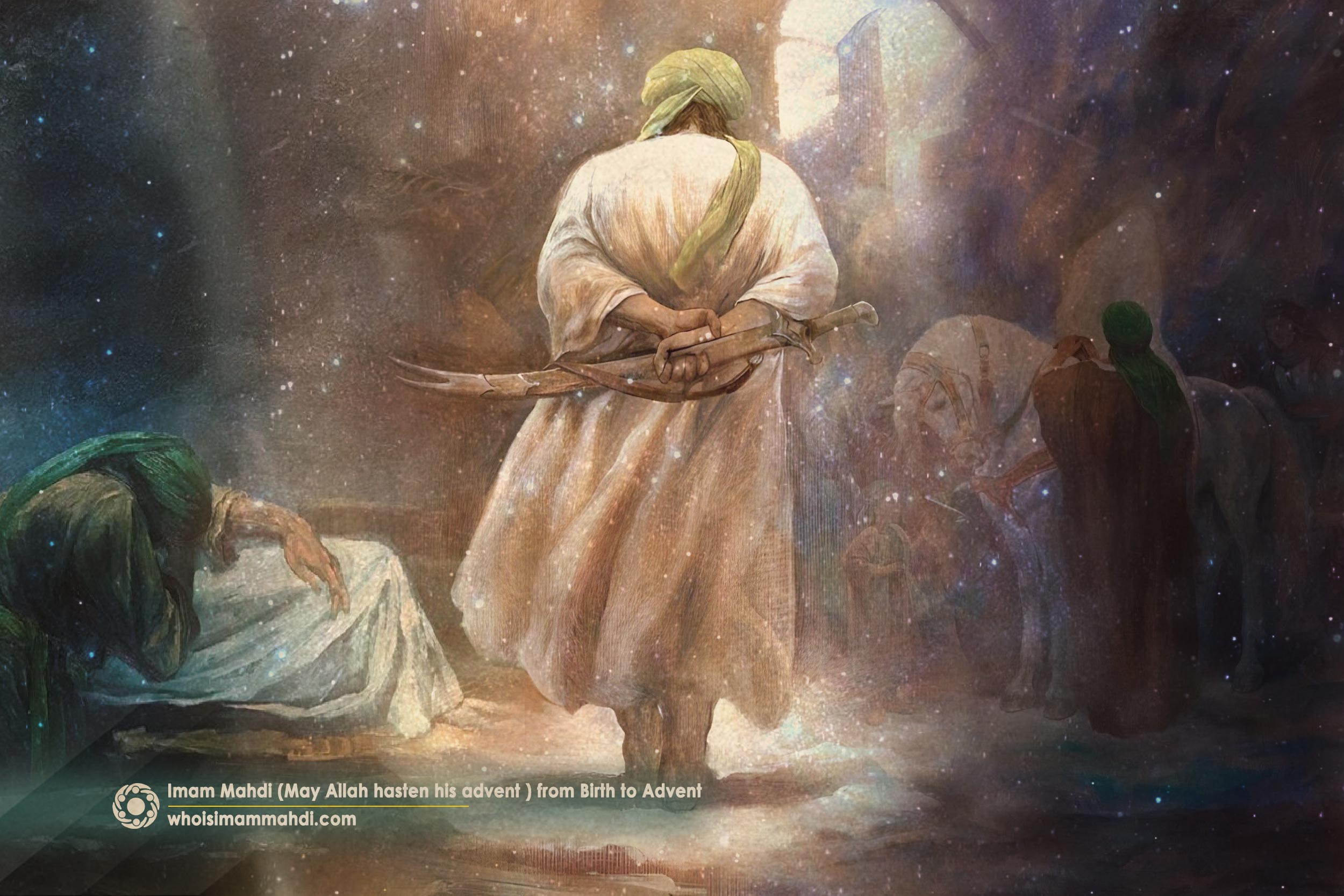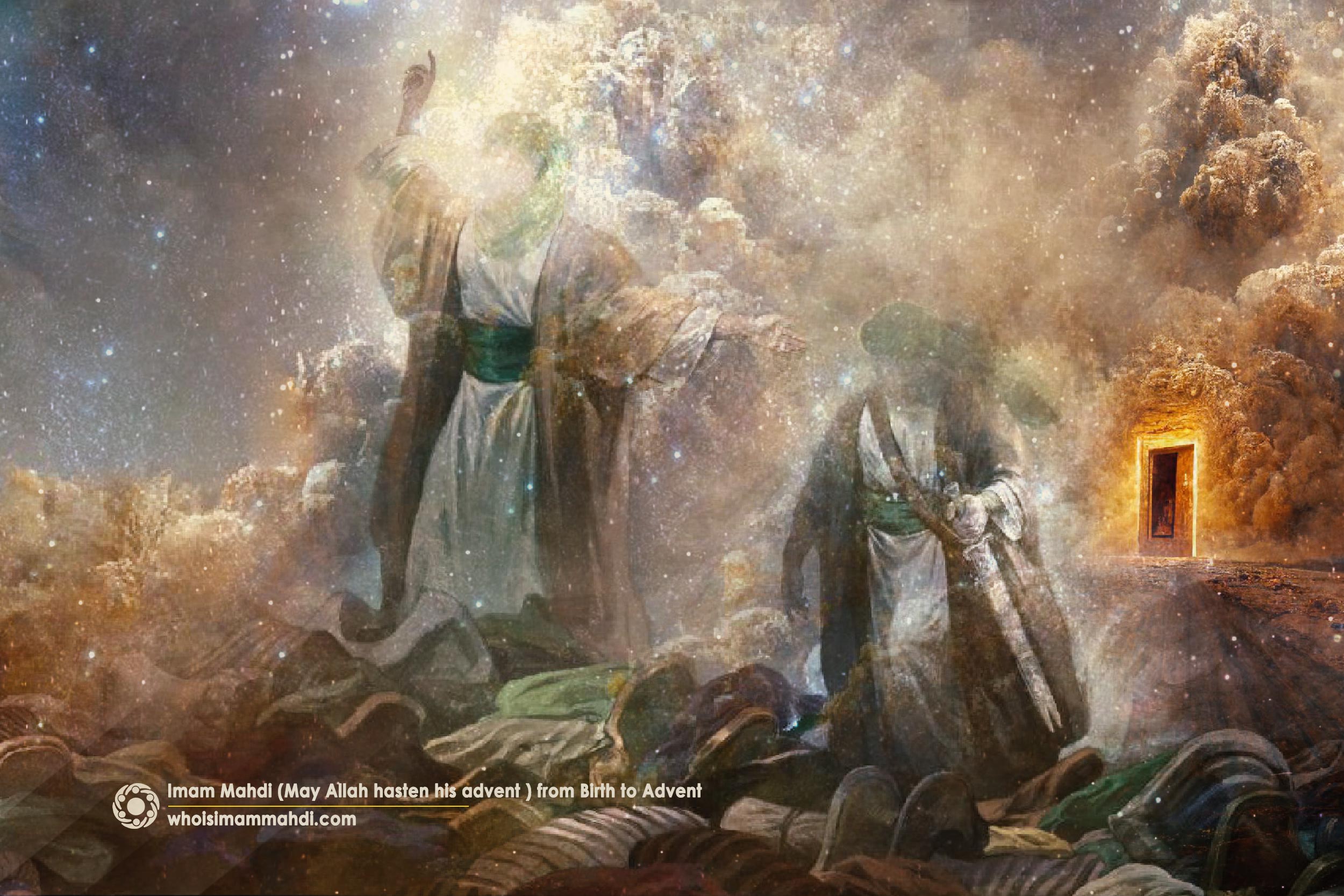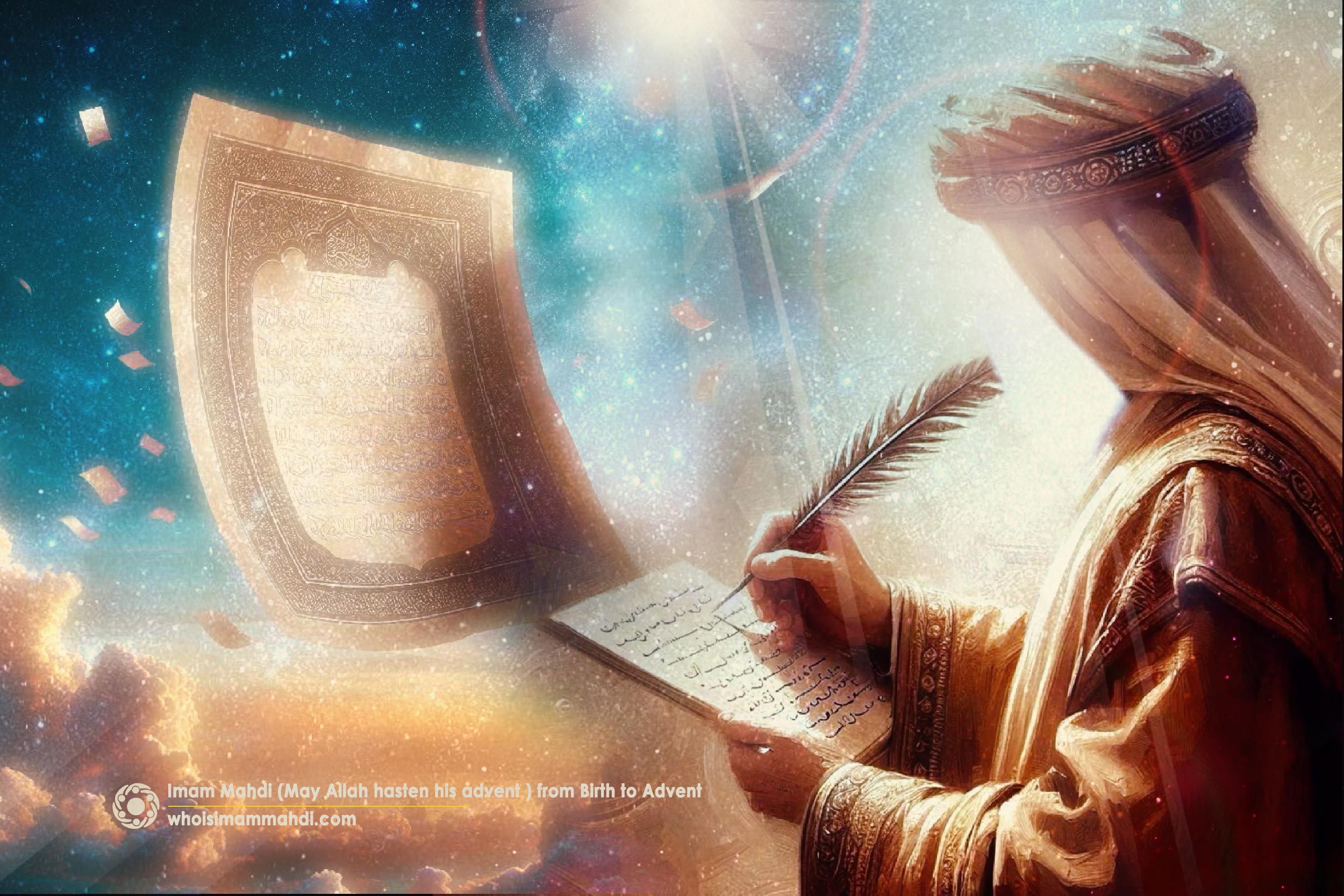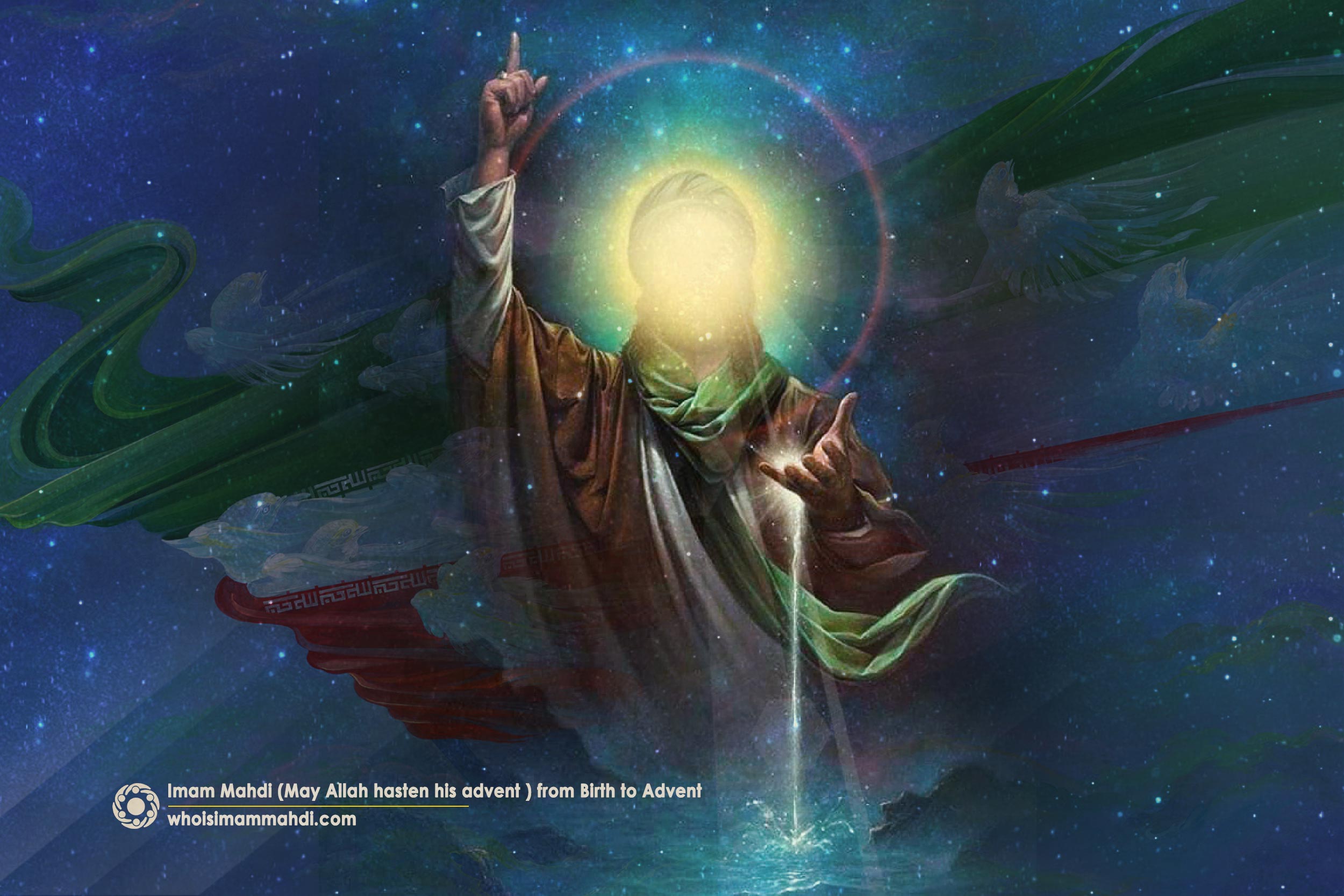Who Is Lady Fatima Zahra, and What Role Does She Play in the Future of History?
Who Is Lady Fatima Zahra?
Lady Fatima Zahra (PBUH) is the daughter of the Prophet of Islam, and her mother was Lady Khadija al-Kubra (PBUH). Lady Fatima Zahra was born five years before the bi’tha of the Prophet. She is one of the Five Pure Ones of the Household of the Prophet (the People of the Cloak[1]). According to Shia beliefs, she is infallible. Lady Fatima Zahra was married to Imam Ali (PBUH), the successor to the Prophet and the first Imam of Shia Muslims. She is the mother of Imam Hassan, Imam Hussain, Zaynab, and Umm Kulthum. Titles such as Zahra, Batul,[2] and Sayyidat Nisa al-Alamin[3] may somewhat convey the truth of who Lady Fatima Zahra is and the virtues she possesses.
When asked “Who is Lady Fatima Zahra?” Shia Muslims describe her as the best woman in both worlds, believing that God’s wrath or pleasure depends on her wrath or pleasure. They also believe that at the time of her birth, Sarah (the wife of Prophet Ibrahim), Asiya (the daughter of Muzahim and wife of Pharaoh), Lady Mary (mother of Prophet Jesus), and Kulthum (the sister of Prophet Moses), were present and took care of Lady Khadija. The status of Lady Fatima Zahra is so high that some Surahs of the Quran such as Al-Kawthar, the verse of purification,[4] the verse of feeding,[5] the verse of affection and love, and hadiths like “Fatima is a part of me”[6] were revealed about her in various social contexts. She was the only woman who accompanied the Prophet during the Mubahala with the Christians of Najran.
While gaining a full understanding of Lady Fatima Zahra necessitates a comprehensive view of her entire life, our knowledge of her childhood and adolescence remains limited. This includes her accompanying the Prophet in the face of persecution by polytheists, her presence in the Valley of Abu Talib, and her migration to Medina with three other women, also named Fatima, and Imam Ali (PBUH).
The role of Lady Fatima Zahra (PBUH) in the history after the Hijrah has been discussed in more detail. She was married to Imam Ali (PBUH) in the second year of the Hijrah and accompanied the Prophet in some battles, including the conquest of Mecca. Moreover, she did not remain silent in various political and social situations and responded appropriately. For example, after the death of the Prophet, she openly declared her position regarding the succession of Imam Ali (PBUH) as an infallible expert by opposing the council of Saqifa, which was formed to determine the Prophet’s successor. She considered Abu Bakr’s claim to leadership as illegitimate and refused to pledge allegiance to him. The Sermon of Fadak,[7] delivered by Lady Fatima Zahra (PBUH), was a defense of the caliphate and succession of Imam Ali (PBUH) and was related to the usurpation of Fadak by the ruling faction.
Despite the immense love and respect the Prophet had for Lady Fatima Zahra (PBUH), she faced tragic events after his death. During an attack by Abu Bakr’s supporters on the house of Imam Ali (PBUH), she was severely injured. These injuries led to her martyrdom on the third of Jamadi al-Thani in the eleventh year of the Hijrah, and at her own request, her funeral was held secretly and at night. Her grave has remained unknown to this day.
Lady Fatima Zahra (PBUH) has always been considered a perfect role model for Shia Muslims. Every year, during the days of her martyrdom, known as Fatimiyyah,[8] Shia Muslims mourn, and her birth anniversary on the 20th of Jamadi al-Thani is celebrated as Women’s Day and Mother’s Day in Iran. Her life, though short in duration, was full of blessings. Some of her legacies include the Tasbih of Fatima,[9] the Mushaf Fatima, the Sermon of Fadak, and the method she adopted and left behind in defense of the infallible Imam and expert.
But have we answered the question, ‘Who is Lady Fatima Zahra?’ by knowing this information? Does knowing or not knowing her benefit us in any way? Why should we seek to know someone who lived fourteen centuries before us? In what ways is the life of Lady Fatima Zahra significant, and how does knowing who she is make a difference in our current lives?
To understand the importance of this topic, this article will examine her life from two perspectives:
- Examining her life as an exemplary woman who was successful in all aspects of her life and is the best role model for anyone who wants to succeed in both personal and family life, as well as in social and political arenas.
- Examining the heavenly and spiritual status of Lady Fatima Zahra and the role she plays in the future of the world.
In the early days of Islam, not long after the Age of Ignorance and the burying of infant girls alive, we encounter a woman who was a role model and leader not only in her personal and family life but also in social struggles. She was the daughter of the Prophet of Islam and held the highest political and social position at her time. However, she never used this position as a means for worldliness or luxury. She was the wife of the bravest and most capable soldier and commander of the Messenger of God, yet she chose a simple lifestyle. In her short life, she acted in a way that has made her a role model for both men and women until the Day of Judgment. In fact, the life of Lady Fatima Zahra (PBUH) contains criteria that are important and necessary for the human bliss.
This is while the role of women has always been a controversial topic in history. Sometimes the status of women has been reduced to that of commodities, and they have been considered the property of men. At other times, in the name of giving women freedom and equal status with men, their feminine virtues and human dignity have been ignored, and they have been made into playthings for worldly desires and ambitions. Sometimes, motherhood and their role as wives are sacrificed for social and political activities, or spirituality and family are used as an excuse for women’s absence from society.
Lady Fatima Zahra: A Perfect Role Model
It is not possible to understand who Lady Fatima Zahra is without at least a brief look at her life. The life of Lady Fatima Zahra (PBUH), both as the daughter of the last Prophet of God and as the wife of Imam Ali (PBUH), was full of ups and downs. However, at no point in her life is there any trace of arrogance or boastfulness on her part.
From her childhood, Lady Fatima Zahra was familiar with the hardships of the newly formed Islam and the attacks of its enemies. When she was only six or seven years old, she experienced the difficulties of life in the Valley of Abu Talib[10] for three years. These were years that were also accompanied by the sorrow of losing her mother,[11] and after that, she increasingly helped and cared for her father, Prophet Muhammad (PBUH), to the extent that she was called Umm Abiha (the mother of her father) by him[12]. After migrating to Medina and marrying Imam Ali (PBUH) in the second year of the Hijrah, Lady Fatima Zahra’s prominent role in supporting Islam did not diminish, but rather it expanded in all political, military, and revolutionary arenas.
Lady Fatima Zahra (PBUH) is a role model for Muslim women; she is spiritually equal to the Prophet and Imam Ali (PBUT). In terms of family life, she endured the hardships of life with Imam Ali (PBUH), who constantly participated in the Prophet’s wars. She dedicated herself to raising the children who would carry on the lineage of the Imamate, nurturing their growth and development. In the absence of both the Prophet and Imam Ali (PBUT), her home became a center of solace and guidance for Muslims seeking counsel and support. In dealing with important political events, especially after the Prophet, she spoke decisively, took a stand, and defended the truth. In this way, she displayed the true and all-encompassing identity of a Muslim woman in all three arenas of spirituality, society, and personal and family life. But these qualities are only a glimpse of the truth of who Lady Fatima Zahra is.[13]
The Prophet’s (PBUH) treatment of and respect for her were not merely the affection and respect of a father for his daughter, but rather it stemmed from the greatness and special status of Lady Fatima Zahra (PBUH) in God’s sight. She passed the test, having emerged victorious from God’s test before her creation.[14] The Prophet’s (PBUH) command to close all doors to the mosque except those of the house of Imam Ali and Lady Fatima Zahra (PBUT), Lady Fatima Zahra’s (PBUH) companionship with the Prophet during Mubahala, her centrality among the Five People of the Cloak, the revelation of the verse of purification and verses from Surah Al-Insan[15] and Surah Al-Kawthar in her honor, titles such as Seddiqeh kubra,[16] Muhaddathah,[17] Mutahhara,[18] Zakiyya,[19] and hadiths such as “Indeed Allah becomes angry when Fatima is angry,”[20] “Fatima is a part of me,” and “Whoever harms her has harmed me”[21] indicate nothing but the exalted status and position of Lady Fatima Zahra in the eyes of the Prophet (PBUH) and God.
To truly become similar to Allah, understanding Allah’s names and attributes is essential. Lady Fatima Zahra, blessed with a heavenly inward state, embodies Allah’s names and attributes perfectly, serving as a radiant example of their manifestation in human form. While her noble character and unique qualities are enough to elevate her status, they only offer a glimpse into her true significance. We still need a deeper understanding of who she truly is and how her legacy impacts our lives today.
Lady Fatima Zahra (PBUH) and the Future of History
What makes Lady Fatima Zahra (PBUH) so distinct and outstanding, both among women of her time and today, is not limited to her being a role model in personal or social life. In fact, to understand who Lady Fatima Zahra is, we need to delve deeper into examining her unique characteristics and the historical and social dimensions of her actions.
Although Lady Fatima Zahra (PBUH) was not officially a prophet or Imam, she possessed such a high spiritual status that only through the words of an infallible Imam can we gain a relative understanding of her position.[22] Imam Hassan al-Askari (PBUH) says about her, “We are the representatives of Allah among the people and Fatima is representative of Allah among us.”[23] According to hadiths from the Prophet (PBUH), “Fatima is a human houri”[24] who, while having her original heavenly status, has a worldly manifestation and appears in the form of a woman. In another hadith, the Messenger of God says that the light of Lady Fatima Zahra (PBUH) is “in a special place beneath the Throne (Arsh),[25] which refers to her position of governance and guidance over all creation except God.[26] To understand the greatness of Lady Fatima Zahra’s personality and to understand who Lady Fatima Zahra truly is, it is sufficient to know that Imam Mahdi (PBUH), as an infallible Imam who is himself the heir of all prophets, has referred to her as a role model, saying, “in the daughter of the Messenger of Allah, there is a good exemplar for me.”[27]
The Mushaf of Fatima (PBUH)
After the Prophet (PBUH) passed away, Lady Fatima Zahra (PBUH) lived for a short period, ranging from seventy-five to ninety-five days. During this time, Gabriel (PBUH) descended upon Lady Fatima Zahra (PBUH) to console her and brought her glad tidings from God about the future of the Ahl al-Bayt and the future of history. In fact, the plan for the Imamate of each Imam and the historical process of their movement, the news about the Prophet’s Ummah (PBUH), and all the current events of humanity in the future, i.e., “the knowledge of what will be,” were dictated to Lady Fatima Zahra (PBUH). This news and reports were revealed to Lady Fatima Zahra (PBUH), and Imam Ali (PBUH) recorded them in the form of the Mushaf of Fatima. According to Imam Sadiq (PBUH), “There was nothing in it (Mushaf of Fatima) of the knowledge of the lawful and unlawful matters but it had the knowledge of things that had happened and things to happen in the future.”[28] This Mushaf has been passed down through the lineage of infallible Imams, each holding it in their time. Now, it is in the hands of the final guardian and proof of God, Imam Mahdi (PBUH). According to Imam Sadiq (PBUH), it is the most excellent written knowledge which the Ahl al-Bayt (PBUT) possess.
A Criterion for Defending the Infallible Expert
While Lady Fatima Zahra (PBUH) played a crucial role throughout Islamic history, her influence took on a central and pivotal importance following the Prophet’s (PBUH) passing away. The events of this short but tumultuous period of Lady Fatima Zahra’s (PBUH) life somewhat lifted the veil from her heavenly and celestial status and revealed who Lady Fatima Zahra truly is. At a critical time when people turned their backs on God’s chosen one and the successor whom the Prophet had introduced, and instead turned to their tribal and clan prejudices, she spared no effort to enlighten people and guide them back towards the one who guarantees the bliss of people in this world and the hereafter. In this short period of her life, she tried in various ways to prioritize the lives of people in the community towards what God has commanded in the Quran,[29] and to shift the focus of society from inanimate, vegetative, and animal perfections towards their supra-rational and human dimension. Through her actions, Lady Fatima Zahra (PBUH) sought to convey a vital message: humanity’s journey towards perfection, the ultimate goal of creation, necessitates the guidance of an infallible expert, the source of all virtue and goodness in the world.
Lady Fatima Zahra’s (PBUH) perspective on the issue of the leadership of society under the guidance of an infallible expert was never ordinary or casual. It stemmed from her divine insight and plan and is indicative of who Lady Fatima Zahra truly is. She knew very well that the root of all evil in society is unjust governance. Therefore, she tried at all costs to prevent the greatest tragedy in history, namely the removal of the infallible expert:
- Firstly, she tried to awaken the people through her speeches and sermons in the mosque.
- Secondly, accompanied by Imam Ali (PBUH), she visited the houses of the Muhajirun (the Emigrants)[30] and Ansar (the Helpers)[31] for forty nights to create unity among the people and to defend Ali (PBUH) as the successor to the Prophet (PBUH), trying to return the companions of the Messenger of God to the right path.
- Thirdly, she took action by boycotting those who played a key role in usurping the caliphate of Imam Ali (PBUH) and removing the infallible expert from society.
- Fourth, she used emotion with intention. She went to Uhud,[32] Baqi’,[33] and also to the tomb of the Messenger of God and wept, and in response to those who asked the reason for her weeping, she stated that the reason was the right that had been denied to Imam Ali (PBUH).
- Fifth, Lady Fatima Zahra’s unwavering commitment to protecting the infallible expert came at a tremendous cost. To prevent the devastating consequences of his removal, she endured a profound personal tragedy, culminating in her own untimely death, the deprivation of Imam Ali from her presence, the orphaning of their children, and the loss of an entire generation of their children.
- Finally, they resorted to a negative struggle, symbolically requesting a secret nighttime burial. This was to ensure that the mystery of who Lady Fatima Zahra is and what God’s hidden secret is would remain forever etched in the memory of history.
Only an infallible being can fully understand the extent of the damage caused by the lack of the rule of an infallible expert in society, and know that the greatest evil in the world is the rule of tyrants, from which all other vices stem.[34] Lady Fatima Zahra deeply understood that rejecting the guidance of the infallible expert would lead to endless bloodshed and injustice, continuing until the Day of Judgment. She also saw how generations would be lost, their lives unfulfilled and unprepared for the hereafter. Despite the overwhelming grief of losing the Prophet (PBUH), she bravely took up the mantle of struggle, dedicating herself to promoting the rightful caliphate of Allah’s chosen deputy. Her actions after the Prophet’s passing set a powerful example for all time: whenever faced with a choice between supporting the infallible Imam and other matters, we should never stray from the path of truth and justice.
Lady Fatima Zahra’s impact extends far beyond her martyrdom in the year 11 AH. Her celestial influence on the governance and guidance of all creation is profound. The ongoing effort to establish the Rule of the Righteous, to restore Allah’s deputy to his rightful position after centuries of waiting, is guided by her wisdom and vision, shaping the actions of each Imam. So, in answer to the question, ‘Who is Lady Fatima Zahra?’, we can say that she is a perfect example in which the truth of the Imam, the infallible expert, and reaching the purpose of creation are linked to her heavenly and celestial status and planning position.
[1]. Gholam Hossein Masoud, “Hadith al-Kisa, The Narration of the Cloak,” Message of Thaqlayn, vol. 13, no. 1, spring 2012.
[2]. separated from uncleanness
[3]. mistress of the women of the worlds
[4]. Quran, 33:33
[5]. Quran, 76:8
[6]. Sahih al-Bukhari 3714 (Book 62, Hadith 63)
[7]. Fadak, a lush date-palm farm near Medina, was a gift from the Prophet Muhammad to his daughter Fatima Zahra. After his passing, however, Fadak was claimed as public property. Fatima Zahra courageously confronted the caliph, delivering a powerful sermon demanding the return of what she believed was rightfully hers. This historical sermon is known as the Sermon of Fadak.
[8]. Fatimiyyah commemorates the martyrdom of Lady Fatima Zahra and is celebrated annually throughout the Muslim world. Due to conflicting historical accounts surrounding the exact date of her passing, scholars have chosen to observe Fatimiyyah on two dates that are widely recognized: seventy-five days and ninety-five days after the Prophet’s death.
[9]. Recitation of dhikr
[10]. Shi’b Abi Talib, a valley nestled between Mount Abu Qubays and Mount Khandama in Mecca, became a refuge for the Prophet Muhammad and his followers. Seven years after the Prophet’s initial mission (Bi’tha), the Meccan polytheists imposed a severe economic and social boycott on him, the Banu Hashim clan, and all Muslims. For three long years, they endured a blockade, living in the harsh conditions of Shi’b Abi Talib.
[11]. The Prophet (PBUH) lost his two great supporters, Lady Khadija and Hazrat Abu Talib (PBUT) in the valley of Abu Talib within the span of a week.
[12]. Majlisi, Biḥar al-anwar, vol. 43, p. 31
[13]. Seyyed Ali Khamenei, A 250-year-old person, The International Relationship Department, 2014, Lebanon, pp. 115-116.
[14]. Majlisī, Rawdat al-muttaqin fi sharh Man la yahduruhu al-faqih. vol. 5, p. 343.
[15]. Quran, 76: 7-8
[16]. someone who says nothing except the truth
[17]. the one spoken to by angels
[18]. purified
[19]. pure from vices
[20]. Al-Qadi al-Nu’man, Sharh al-Akhbār fi Faḍā’il al-A’immah al-Aṭhār, vol. 3, p. 29.
[21]. Ibid, vol. 3, p. 30; Sahih Muslim, vol. 5, p. 54.
[22]. Majlisi, Biḥar al-Anwar, vol. 43, p. 65.
[23]. Abd al-Husiyn Tayyib, Atyab al-bayan fi tafsir al-Quran, vol. 13, p. 236.
[24]. Majlisi, Biḥar al-Anwar, vol. 43, p.7.
[25]. Shaykh al-Saduq, Maʿānī l-ʾAkhbār. Book 1, Ch. 429.
[26]. The Throne of Allah is the center of governance and management.
[27]. Bihar al-Anwar, vol. 53, Ch. 31, p. 247.
[28]. Kulayni. Al-Kāfi. vol.1, Book 4, Ch. 40.
[29]. Quran, 9:24
[30]. The Muhajirun were the early converts to Islam, including the Prophet Muhammad’s advisors and relatives, who made the momentous journey from Mecca to Medina, seeking refuge and establishing the first Muslim community.
[31]. The Ansar were the residents of Medina who opened their homes to Prophet Muhammad and his followers, the Muhajirun, when they migrated from Mecca during the Hijra.
[32]. Lady Fatima in addition sought to keep alive the memory of the martyrs of Uhud and their bravery, particularly highlighting the unparalleled courage of Imam Ali (PBUH) and the cowardice of those who fled during the Battle of Uhud. She aimed to make it clear to the people that those whom they had pledged allegiance to and referred to as the caliphs of the Messenger of God (PBUH) were the very same individuals who turned and fled during the Battle of Uhud. In contrast, it was her husband, Ali (PBUH), who single-handedly defended the life of the Messenger of God (PBUH) to such an extent that the angels were moved by his sacrifice and support, proclaiming, “There is no youth but Ali (peace be upon him), and there is no sword but Zulfiqar.”
[33]. Baqiʿ al-Gharqad, the first Islamic cemetery in Medina, holds the graves of four Shi’a Imams, along with many other esteemed companions of the Prophet (Sahaba) and their followers (Tabi’un). Structures, known as Buq’as, were erected over these graves, serving as a mark of respect and reverence. However, in a tragic event known as the Demolition of al-Baqi’, Wahhabi groups destroyed these structures in 1221/1806-7. The Ottoman king ‘Abd al-Hamid II later ordered their reconstruction, only for them to be demolished again by the order of Amir Muhammad, ruler of Medina, in 1344/1926. Al-Baqi’, located near Masjid al-Nabi (the Prophet’s Mosque), is a sacred pilgrimage site, particularly for Shiites, as it’s believed to be the resting place of Lady Fatima. Numerous hadiths, from both the Prophet and the Imams, highlight the spiritual merit of this cemetery.
[34]. “The Quran has an apparent essence and a hidden essence. All that Allah has made unlawful in the Quran is apparent and hidden facts in this (category) are the unjust Imams. All that Allah has made lawful in the book is apparent and the hidden facts in it (category) are the Imams of the truth (Leaders with Divine Authority).” (Al-Kafi. vol. 1, Book 4, Ch. 85).






